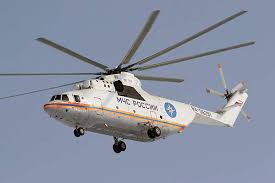Stamp: Aerospatiale Puma (Belize 1993)
Aerospatiale Puma (Belize 1993)
01 April (Belize ) within release Royal Air Force goes into circulation Stamp Aerospatiale Puma face value 25 Belize cent
| Stamp Aerospatiale Puma in catalogues | |
|---|---|
| Stamp Number: | Sn:BZ 1003 |
Stamp is square format.
75th AnniversaryAlso in the issue Royal Air Force:
- Stamp - Aerospatiale Puma face value 25;
- Stamp - British Harrier face value 50;
- Stamp - DeHavilland Mosquito face value 60;
- Stamp - Avro Lancaster face value 75;
- Stamp - Liberator face value 1;
- Stamp - Short Sterling face value 3;
Stamp Aerospatiale Puma it reflects the thematic directions:
A helicopter is a type of rotorcraft in which lift and thrust are supplied by horizontally spinning rotors. This allows the helicopter to take off and land vertically, to hover, and to fly forward, backward and laterally. These attributes allow helicopters to be used in congested or isolated areas where fixed-wing aircraft and many forms of short take-off and landing (STOL) or short take-off and vertical landing (STOVL) aircraft cannot perform without a runway.
Aviation is the practical aspect or art of aeronautics, being the design, development, production, operation and use of aircraft, especially heavier than air aircraft. The word aviation was coined by French writer and former naval officer Gabriel La Landelle in 1863, from the verb avier (synonymous flying), itself derived from the Latin word avis ("bird") and the suffix -ation.
An air force, also known in some countries as an aerospace force or air army, is in the broadest sense, the national military branch that primarily conducts aerial warfare. More specifically, it is the branch of a nation's armed services that is responsible for aerial warfare as distinct from an army, navy, or a marine corps. Typically, air forces are responsible for gaining control of the air, carrying out strategic and tactical bombing missions, and providing support to land and naval forces.
The term "air force" may also refer to a tactical air force or numbered air force, which is an operational formation either within a national air force or comprising several air components from allied nations. Air forces typically consist of a combination of fighters, bombers, helicopters, transport planes and other aircraft.
Many air forces are also responsible for operations of the military space, intercontinental ballistic missiles (ICBM), and communications equipment. Some air forces may command and control other air defence assets such as anti-aircraft artillery, surface-to-air missiles, or anti-ballistic missile warning networks and defensive systems. Some nations, principally Russia, the former Soviet Union and countries who modelled their militaries along Soviet lines, have or had an air defence force which is organizationally separate from their air force.
Peace-time/non-wartime activities of air forces may include air policing and air-sea rescue.
Air forces are not just composed of pilots, but also rely on a significant amount of support from other personnel to operate. Logistics, security, intelligence, special operations, cyber space support, maintenance, weapons loaders, and many other specialties are required by all air forces.



